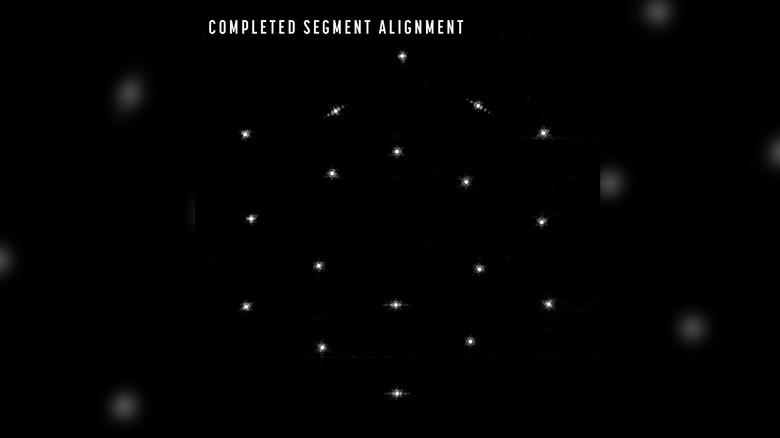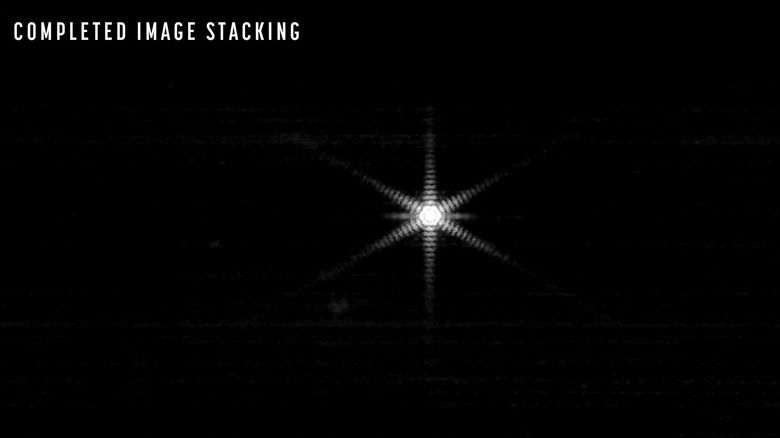These 18 Tiny Dots Are A Huge Deal To NASA's Webb Space Telescope
The James Webb Space Telescope has made itself at home in its final destination, in orbit around the sun. It arrived there safely with all of its hardware deployed in a nail-biting maneuver of unfurling and unfolding. But if you're hoping to see beautiful images of space from the world's newest and most powerful space telescope, you're going to need to wait a little longer. James Webb is currently in the process of aligning its mirrors, and that's no small task – it's expected to take several months.
However, that doesn't mean there's no news from Webb. Recently, the telescope engineers hit an exciting milestone in the mirror alignment process, creating a stack image from an image array showing 18 points of light in a hexagon formation. It might look like a simple image, but this is one vitally important step in getting Webb ready for science.
The image shows the same star, HD 84406, which originally appeared as 18 separate points of light. That's because Webb's primary mirror is made up of 18 segments, each of which is hexagon shaped and has to be tweaked and adjusted with nanometer precision to make the telescope as accurate as possible. The 18 points of light were arranged into what is called an array, which had a hexagon shape as well to represent the overall shape of the primary mirror.
What NASA announced on February 25 is that those 18 images have now been brought to one single point in a process called image stacking (via NASA).
What image stacking means
With the image array in hand, engineers were able to make tiny tweaks to each of the 18 mirror segments so they were lined up relative to each other exactly correctly. They made adjustments to all of the primary mirror segments, as well as the secondary mirror which is a smaller round mirror located on the end of a boom. When this process, called segment alignment, was complete, the engineers could stack each dot on top of each other so that light from each segment was pointed to the same location. This was done by tweaking mirrors in groups of up to six and adjusting them until all the points of light were overlapping.
That means that all of the starlight from the target star, HD 84406, is now hitting one place on the camera detector, and the primary mirror is now working as one big mirror instead of 18 smaller mirrors. It's not the end of the process, however, as the team still have to line up the segments with extreme accuracy to ensure the telescope can detect even very faint light from distant targets.
"We still have work to do, but we are increasingly pleased with the results we're seeing," said Lee Feinberg, optical telescope element manager for Webb at NASA's Goddard Space Flight Center (via NASA). "Years of planning and testing are paying dividends, and the team could not be more excited to see what the next few weeks and months bring."

